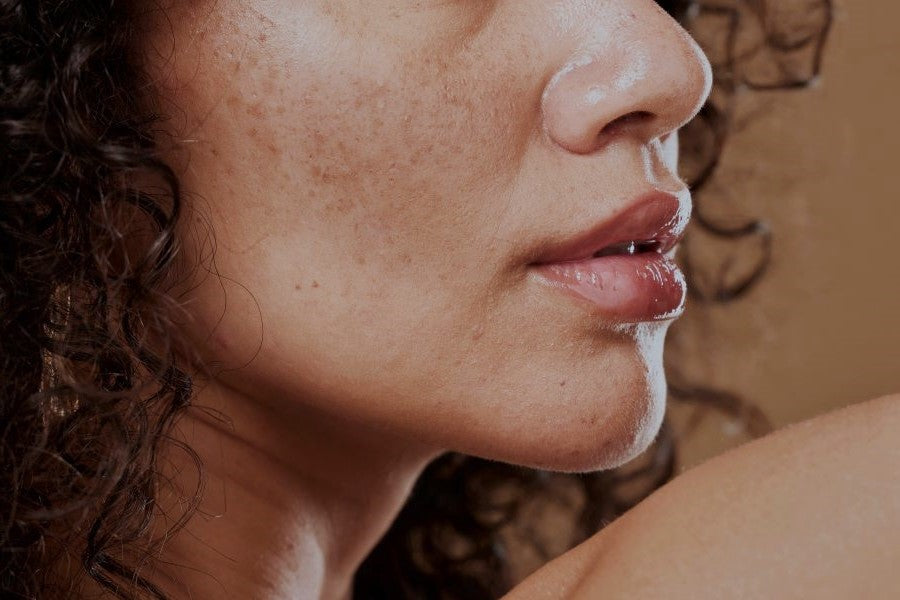Guide for Acne Skin - Expert Tips, Best Ingredients & Routine

Acne is a common skin condition that affects people of all ages. Pimples, whiteheads, blackheads, and cysts, acne can be both physically and emotionally distressing. While it's often associated with teenagers, 80% of Americans experience it at some point in their life. This guide will provide you with valuable insights into acne, its causes, and how to treat it.
Understanding Acne Skin
Acne occurs when hair follicles become clogged with oil and dead skin cells. This creates a perfect environment for bacteria to thrive, leading to inflammation and pimples. Several factors contribute to acne development, including:- Hormonal changes: Fluctuations in hormones, particularly during puberty, pregnancy, and menopause, can trigger acne outbreaks.
- Genetics: A family history of acne increases your risk of developing the condition.
- Diet: While research is inconclusive, some studies suggest that consuming excessive amounts of sugary or processed foods may worsen acne.
- Stress: Stress can exacerbate acne by increasing cortisol levels, which can stimulate oil production.
Types of Acne
Acne can manifest in various forms:
- Whiteheads: Small, pus-filled bumps beneath the skin's surface.
- Blackheads: Open comedones that appear as dark spots on the skin.
- Papules: Small, red, tender bumps.
- Pustules: Papules with a pus-filled tip.
- Nodules: Large, painful, under-the-skin bumps.
- Cystic acne: Severe acne with painful, pus-filled lumps that can cause scarring.
Best Ingredients to Combat Acne
Several ingredients have proven effective in treating acne:
- Salicylic acid: Exfoliates the skin, unclogs pores, and reduces inflammation.
- Benzoyl peroxide: Kills acne-causing bacteria and helps to dry up excess oil.
- Niacinamide: Balances oil production, improves skin texture, and reduces redness.
- Tea tree oil: Possesses antibacterial and anti-inflammatory properties.
Building an Effective Acne Skincare Routine
A consistent skincare routine is essential for managing acne. Here are the basic steps:
- Cleansing: Gently cleanse your face twice a day with a mild, oil-free cleanser to remove dirt, oil, and makeup.
- Exfoliation: Use a chemical exfoliant containing salicylic acid or glycolic acid to remove dead skin cells and prevent clogged pores, two to three times a week.
- Treatment: Apply acne medication as prescribed by your dermatologist or your acne treatment.
- Moisturizer: Opt for an oil-free, non-comedogenic moisturizer to hydrate your skin without clogging pores.
Remember: Avoid touching your face, as this can spread bacteria and worsen acne.
Additional Tips
- Over-the-counter treatments: Many effective acne products are available without a prescription. However, if your acne is severe or persistent, consult a dermatologist for professional guidance.
- Diet and lifestyle: While the evidence is mixed, maintaining a balanced diet, managing stress, and getting enough sleep can contribute to overall skin health.
- Change your pillowcase: Pillowcases can hold onto bacteria and worsen your acne, so try to change them frequently especially if the breakouts are located on the sides of your face.
- Patience: Acne treatment takes time. Be patient and consistent with your skincare routine. Avoid picking or squeezing pimples, as this can lead to scarring.
We know it can be daunting to spend time searching for the right acne products, which is why we created the perfect kit to take care of your skin effortlessly. Our Acne and Oily skincare kit includes a potent salicylic acid spot treatment to target and reduce blemishes, along with a lightweight moisturizer infused with Vitamin C to brighten and hydrate your skin. With this combination, you can effectively combat acne while keeping your skin hydrated and glowing.
By understanding the causes and types of acne, incorporating effective ingredients into your skincare routine, and practicing good skin hygiene, you can take control of your acne and achieve clearer, healthier skin.





